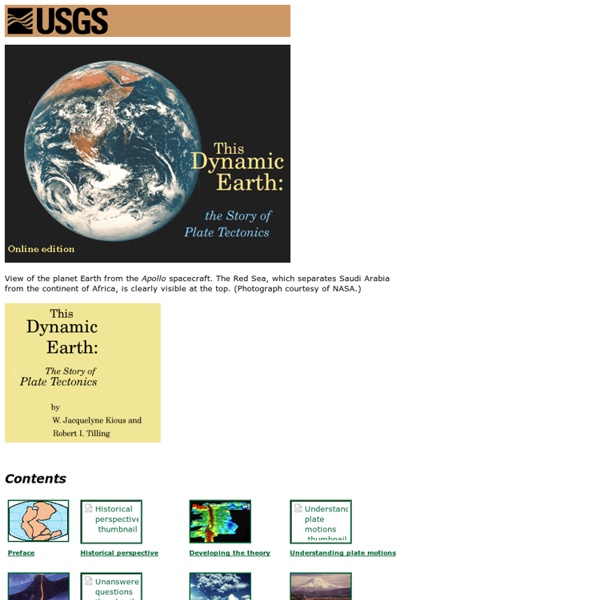#GeoEdChat | #Geography #Education #GeoEd #Geo #GIS #Teaching #Learning #OutdoorEd #Fieldwork #GuerrillaGeography #GAWeek
Wegener's Puzzling Evidence Exercise (6th Grade)
Although Alfred Wegener was not the first to suggest that continents have moved about the Earth, his presentation of carefully compiled evidence for continental drift inspired decades of scientific debate. Wegener's evidence, in concert with compelling evidence provided by post World War II technology, eventually led to universal acceptance of the theory of Plate Tectonics in the scientific community. The following files are needed for this exercise and can be downloaded in pdf format (Teacher Overview, (For Teachers) Wegener's Key to Continental Positions for grade 6, Student Puzzle Pieces, Key to Wegener's Evidence sheet, and Student Map of the World Today). If students need additional hints beyond those provided below, there is a Puzzle Outline Hint to be used as a base for the puzzle. Objectives Students will observe and analyze scientific evidence used by Wegener. The Student Puzzle Pieces and Legend To start this activity the teacher will present background information on Wegener.
Geo-Primary
Assessing Primary Geography Teacher assessment is a complex matter, but here are a few tools to help you with part of the process. Principles and purposes of assessment These are some special assessment tasks devised by teachers in Staffordshire and Derby. They are designed to be completed by pupils, generally towards the end of a unit, to help teachers judge what pupils know, understand and can do, in order to help teachers assess pupils' progress. Recording pupils' progress These examples of recording grids are useful to help you devise your own. Working on your own moderating pupils' attainment can be very difficult.
Guesthollow.com - Homeschool Curriculum, Printables & Resources
Click here to return to our main notebooking printables page. All printables in this section require free Adobe Acrobat Reader. These lapbooking downloads are our gift to you. You can download them for free! For information about lapbooking and links to more freebies, please visit Jimmie's excellent Squidoo lens! Some of the graphics in this pack were purchased from and © 2008 Jupiter Images, the rest are hand-made by me. ;-)
Geography Champions - Primary Geography Champions Network
ProjectBritain.com - A resource of British Life and Culture in the UK by Woodlands Junior
UK
Official name: United Kingdom of Great Britain and Northern Ireland Location: located off the north-western coast of continental Europe. It spans an archipelago including Great Britain, the northeastern part of the island of Ireland, and many smaller islands.Northern Ireland is the only part of the UK with a land border with another sovereign state, sharing it with the Republic of Ireland Apart from this land border, the UK is surrounded by the Atlantic Sea, the North Sea, the English Channell, and the Irish Sea. The United Kingdom is a constitutional monarchy and unitary state. Capital: LONDON Dependencies: The United Kingdom has sovereignty over seventeen territories which do not form part of the United Kingdom itself, 14 British Overseas Territories and three Crown Dependencies. Language: English is the official language Population: 62,041,708 Currency: Pound sterling The flag: The flag of the United Kingdom is the Union Flag (also referred to as the Union Jack). Sources:
Britain from the Air - Free Outdoor Street Gallery
Know Britain Site for British Culture, Customs, History and Directory of Hotels and Guest Houses
Crayon Rocks
We've had a very, very warm winter here in Michigan. With such little snow, the ground has been exposed and my little rock hounds have been collecting rocks again. I thought we'd revisit the types of rocks again (sedimentary, metamorphic and igneous) - but this time give them a more active and visual way to think about how each are formed. There are many examples of creating rocks from crayons, but this pdf from the the Exploratorium is very helpful. Materials Needed: crayons, several of each in four different colorscrayon or pencil sharpener4 containers for holding the crayon shavings3-6"x6" pieces of aluminum foilpopsicle stick or other disposable stirrer mugboiling waterProcess: Unwrap the crayons and use the sharpener to create shavings. Sedimentary rocks Sedimentary rocks are formed from sediments (tiny rock particles that were created by weathering or erosion) that were layered and then compressed. Fold the aluminum foil up tightly around the shavings and then compress it.



